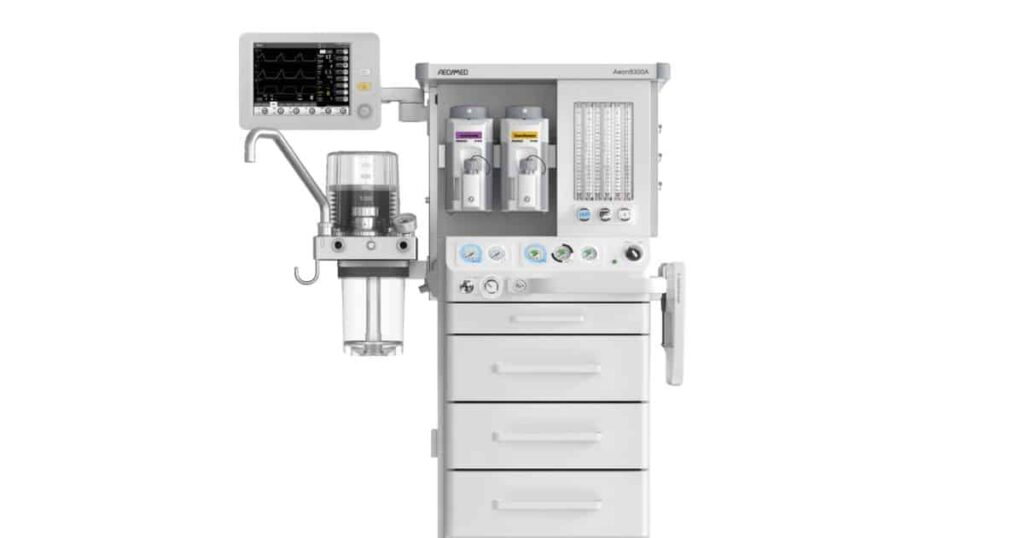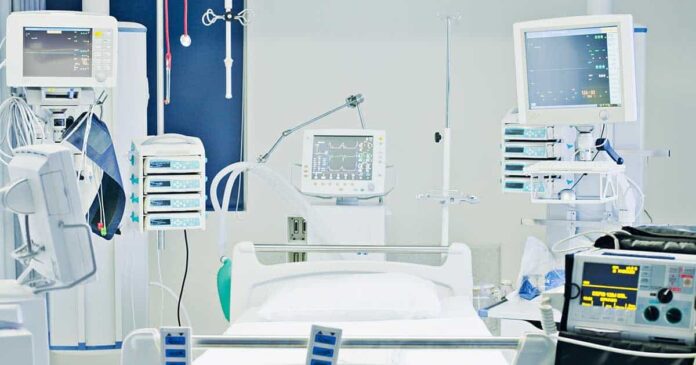Aromatherapy helps anesthetized patients wake up. It reduces nausea and vomiting. Not one anesthesia machine fits everyone, whether you’re in a hospital or private clinic. You should examine several considerations before buying one.
Here, we will share a comprehensive guide about how to buy anesthesia machines. You may wonder what to watch. It may be difficult, but there is hope. This post offers suggestions for buying the greatest anesthetic machines nowadays.
Tips to buy anesthesia machines

The following are important tips for buying these machines:
- Pick a Ventilator
Single-circuit piston and double-circuit bellows ventilators are available. Pressurized gas drives and compresses bellows to ventilate. Computer-controlled piston ventilators also add gas to the breathing system. It is also single-circuit and gas-free.
The engine compresses gas in the piston, increasing pressure. The gas enters the lungs. Your anesthesia machine should only have a standing bellow ventilator. As a machine part, this ventilator is ideal. Why does it matter? Upon detection of a leak or patient disconnect, a standing bellows ventilator collapses promptly.
Machines without hanging bellows will refill even when a large leak is present, endangering the patient and operator. The alarm system on modern anesthesia equipment also sounds when a patient is disconnected, or a system leak is discovered.
All surgeries being ambulatory have changed. The ventilator you use should deliver guaranteed volume and pressure-limited breathing to protect the lungs. New or secondhand medical equipment should have robust pressure control to ventilate challenging patients.
- Consider Size and Mobility
The correct anesthetic machine depends on space. Consider the operating room’s size and how often you’ll move it. In a fixed site, size and mobility aren’t an issue. However, smaller transportable equipment is preferable for transport.
- Research:
- Services provided
- Warranty
- Location of manufacturing
- Maintenance or repair costs
- Warranty Duration
- Storage
Consider storage while buying anesthetic machine parts. It must hold stylets, tubing, and monitors. Attaching the suction regulator to mobile devices requires built-in suction. However, appropriate storage will also ensure smooth operation.
- Safety Features
Almost all current systems contain safety safeguards but check. Nitrous or oxygen backup cylinders should also be on the back of the machine. They can be used as backups if the primary supply goes out. Also, check the machine for oxygen sensors first. They’re also crucial since they show oxygen delivery %. You can also see low supplies.
Two vaporizer ports are needed for children and adults. Halothane and sevoflurane induce children. Adults can also be IV-induced. Even though most modern systems have these, you should also check the machine’s safety features before buying. The back of the machine should have backup oxygen and/or nitrous cylinders in case the main supply runs out.
In addition to backup cylinders, the devices you’re considering should also feature oxygen sensors to tell operators how much oxygen is being provided to patients and when it’s running low.
If your clinic treats adults and children, your recommended equipment should have two vaporizer ports. This will also allow IV induction and isoflurane maintenance in adults and sevoflurane or halothane induction in youngsters.
- Integrated Systems
For full operating rooms with busy surgery schedules, integration allows volume and pressure-controlled ventilation. Other sophisticated modes also may exist. Three vaporizer chambers, integrated monitoring, and gas delivery management are common. You have to work with electronic data systems.
- Check System Compatibility
Consider whether your new anesthetic machine will function with your current equipment. Check your new vaporizer’s mounting choices. Also, consider buying compatible vaporizers.
Installations that employ mounting rails to position test lights will need them on the new machine. You also need to check the gas delivery and scavenging system.
- Investment Worthiness
Maintenance and machine purchasing should be considered. Consider equipment issues. Imagine the most costly mistake. Consider how long you’ll use the machine. Refurbished items have original manufacturer end-of-life. Support ends after a specified date. Maintaining your anesthetic machine is possible with some specialists. Find a company with high-quality used or new machine parts.
- Low-flow capabilities
Desflurane and sevoflurane are pricey. Therefore, volume reduction can help you. Low flow resembles autopilot. As the patient sleeps, new gas will be maintained. Nitrous oxide, oxygen, air, and vaporized anesthetic will be present. Using less new gas requires less anesthetic maintenance.
- Consult Experts
Consult anesthesia machine repair and sales experts. They can also assist you in avoiding overspending on a feature-rich system.
- Look at Different Brand Options
After determining your needs for features, size, and storage, you’ll need to choose a machine brand. There are several brands. Which solution is optimal for your facility depends on what you value in a machine. It’s also worth considering that some brands offer more.
- Anesthesia Systems GE
GE anesthesia systems are popular for many reasons. GE’s top anesthetic machine brands include Drager and Ohmeda. Battery backups allow both types to operate during power outages.
Due to their open architecture, Ohmeda and Drager machines can also work with your data management system and other equipment. This technology also lets clinicians focus on patient health rather than system health during anesthetic machine use.
Drager’s fresh gas decoupling technology avoids volume, barotrauma, and FGFs from increasing delivered tidal volume, improving patient safety. Other top GE anesthetic systems are Carestation, Aespire, Aestiva, and Avance.
- Purchase New and Refurbished Equipment
If you need to replace an anesthetic system, you can get a new or refurbished one. Naturally, many factors must be considered. Buying new equipment also has many benefits, including offering patients the latest technology. New equipment can also attract more patients. As indicated, today’s anesthetic machines’ many functions help professionals focus on patients.
- Payment Choices
More payment choices are another perk of buying old equipment. Unlike new anesthetic equipment, remanufactured ones offer flexible payments. No costs apply to equipment leasing, which has fixed monthly payments.
Simply replace old anesthetic equipment with a refurbished one with newer technology. Equipment leasing companies handle the next steps.
Conclusion
Ask the daily equipment users what they like. They can also guarantee the machine is affordable and suitable for your facility. We have explained various things that you need to consider while buying anesthesia machines. You can understand by these tips how to buy anesthesia machines. Keep in mind your requirements, budget, and brand options.
Frequently Asked Questions
Q. What is the cost of an anesthetic machine?
Depending on choices, a new anesthetic machine might cost $30,000 to over $150,000. (New machines come with free customer service, but add-ons and accessories can quickly increase the take-home cost.)
Q. What are the two types of anesthetic machines?
The anesthesia machine has three main pressure systems:
- High-pressure
- Intermediate pressure
- Low-pressure.
Two main types of anesthetic machine vaporizers exist:
- Variable bypass
- Measured flow
Q. Is anesthesia risky?
General anesthesia is safe. Not many people experience major issues from general anesthesia. This applies to those with serious illnesses. Complication risk is more strongly linked to operation type and physical health.


